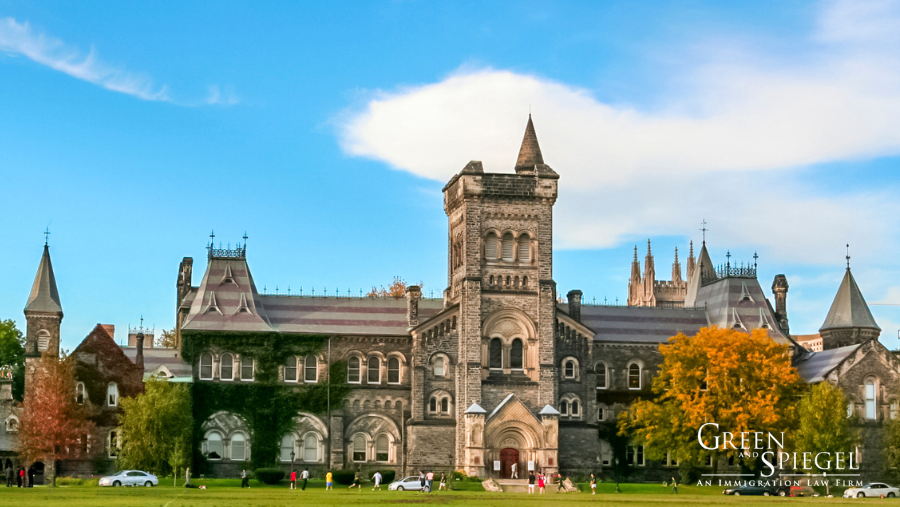The US presidential election is about a month away but many Americans are already thinking about an exit plan in case the election results do not go their way. The night of the first presidential debate, on September 29, 2020, Google searches for “move to Canada” saw a huge spike. A similar thing happened on election night in 2016 when the IRCC website crashed as a result of a large influx of activity. But, just how easy is it for our American neighbours to move up to Canada?
Many Americans have close ties to Canada due to the close proximity and relationship that both countries have. There are many who have claims to Canadian citizenship as a result of being born in the United States to a Canadian citizen parent. Upon the issuance of a Canadian citizenship certificate, they are allowed to live and work in Canada and have all of the rights and responsibilities as a Canadian citizen, including voting rights and the right to carry a Canadian passport and possibly most importantly, the ability to say “I am Canadian”.
Permanent residents and citizens of Canada can sponsor their American spouse, common-law partner, and or dependent child for permanent residence. Permanent residents and citizens of Canada can also sponsor their American parent or grandparent. The application assesses the genuine relationship between the sponsor and applicant.
Without an immediate family connection to Canada, Americans who wish to become permanent residents must apply under the Economic Class, most commonly the Express Entry System. Express Entry is Canada’s immigration application management system for most economic streams of immigration to Canada. Candidates for Express Entry are awarded up to 1,200 points under a ranking system meant to identify those candidates most likely to succeed in Canada. Points are awarded based on age, education, language ability, work experience and adaptability. The highest ranked candidates in the Express Entry pool will receive an “invitation to apply” after which they will have 60 days to complete an application for Permanent Residence in Canada.
Another economic stream is the provincial nominee programs with “skilled worker” or “employment” based streams that select candidates who have a qualified job offer (usually in a high-skilled or in-demand specific occupation). Some provinces also have investor or entrepreneur streams for people with significant assets who wish to make a substantial investment in the province. Each province has a different set of specific criteria and a limited quota each year for nominations.
If Americans wish to move to Canada for work, they need work authorization. A Work Permit is an authorization that allows a foreign national who is a Temporary Resident in Canada to work. There are usually 4 conditions specified: the Employer; the Occupation; the Location; and the Duration of the Work permit.
The Canada–United States–Mexico Agreement (CUSMA), formerly known as the North America Free Trade Agreement (NAFTA) allows citizens of Canada, the United States and Mexico to gain quick entry into each other’s countries for temporary business or investment reasons.
Citizens of the United States working in more than 60 specific professional occupations such as accountant, architect, computer systems analyst, engineer, graphic designer, hotel manager, interior designer, librarian, management consultant, scientist, doctor, dentist, nurse, psychologist, etc. may be eligible to apply for work permits under the CUSMA Professionals category, so long as they have pre-arranged employment with a Canadian enterprise in an occupation that matches the qualification set forth in the CUSMA.
A CUSMA trader work permit may be granted to an applicant who is seeking temporary entry to carry on substantial trade in goods or services principally between Canada and the United States. A CUSMA investor work permit may be granted to an applicant who is a citizen of the United States and whose enterprise or firm to which the applicant is coming has American nationality. The applicant must be seeking entry to develop and direct the operations of an enterprise in which the applicant has invested, or is actively in the process of investing, a substantial amount of capital.
Work permits may also be issued to intra-company transferees sent to work for a related/qualifying company or Canadian entity of a multi-national company in a specialized knowledge, senior managerial or executive position. They must have been employed continuously for a period of at least 1 year in the previous 3 years by the related sending company.
Where there is no applicable category under the CUSMA or other work permit program available, the foreign worker must apply for a work permit pursuant to a Labour Market Impact Assessment (LMIA). The LMIA work permit is based on labour or skills shortages and means that the Canadian employer must recruit Canadians for the role prior to submitting the LMIA application. Once an LMIA approval is issued, the temporary foreign worker will be able to apply for a Work Permit.
Canada has great schools and is consistently ranked highly as a popular destination for international students. Americans usually round out the top 5 source countries for international students in Canada. Americans are required to obtain a study permit for engaging in academic, professional, vocational or other education or training that is more than six months in duration at a designated learning institute in Canada. In general, students at the post-secondary level or those over the age of 18 will require a study permit to authorize their studies in Canada. International students can transition to worker, permanent resident and eventually Canadian citizen.
American citizens are welcomed to Canada as visitors. No visa, no electronic Travel Authorization (eTA), no biometrics are required. American citizens are allowed to enter and remain in Canada for up to 6 months as visitors. However, they are not authorized to work or study or access our public health care system, but they could enjoy our pristine waters, open skies and clean air. Due to the border closures as a result of COVID-19, only visitors with a non-optional or non-discretionary travel purpose are allowed into Canada at this time.
In order to be permitted entry into Canada under any category, individuals must be admissible under Canada’s immigration laws. Inadmissibility issues include security risks, international or human rights violations, criminality, medical issues that may cause excessive demand on Canada’s public health care system or danger to public health or safety, non-compliance or misrepresentation.
Typically, if an individual is inadmissible to Canada, they will not be permitted entry. However, if the individual has a valid reason to travel to Canada, like a special (temporary) event, they may be issued a temporary resident permit. In addition, individuals who have committed or been convicted of a crime, may be able to overcome inadmissibility, depending on the type of crime committed and time that has passed since the incident.
Despite dealing with the effects of the COVID-19 pandemic, the Canadian government continues to view immigration as a Canadian advantage. Immigration is viewed as critical to Canada’s economic recovery and the government of Canada is continuing to build an immigration system that welcomes newcomers to contribute to vibrant communities and an inclusive and prosperous country.
Moving to Canada is be a big commitment and decision that should not be taken lightly. It is not always so simple or quick to pick up and leave and Google might not provide accurate or up to date information. However, for those Americans ready to join Canadians up north, Canada is prepared to welcome our American family, friends and neighbours … when the border re-opens.





